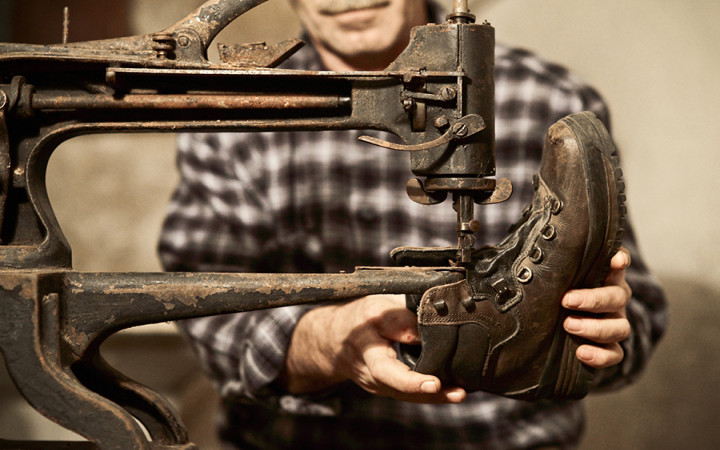Today’s Wonder of the Day was inspired by Jack. Jack Wonders, “What is a Cobbler?” Thanks for WONDERing with us, Jack!
When you think of the types of errands that grown-ups run on a regular basis, what comes to mind? You’ve probably tagged along to the grocery store for food. Maybe you’ve gone with them to the dry cleaners for laundry. Maybe you’ve even gone along to the mechanic for an oil change or the seamstress to pick up mended clothes.
Have you ever been to the cobbler? If you’re scratching your head, you might be WONDERing what—or who—a cobbler is. In fact, some of you might be thinking of a dessert that goes great with ice cream.
The cobbler we’re talking about isn’t a dessert. It’s a person who repairs shoes! Most modern cobblers own their own small businesses known as shoe repair shops.
Cobblers have been around for about as long as shoes. Today, some cobblers are also shoemakers. Historically, though, those two professions have been separate. Shoemakers (called cordwainers in England) were skilled artisans who made shoes by hand out of brand new leather.
Cobblers, on the other hand, repaired shoes. In fact, cobblers were often forbidden from working with new leather. Instead, they had to use old leather to make their repairs.
The two professions began to merge around the start of the 19th century. That’s when industrialization allowed shoes to be mass-produced. Shoemakers who found themselves out of work often turned to repairing shoes to make money.
Today, many shoes are made out of plastic and synthetic materials rather than leather. This has caused the profession of the cobbler to suffer. Shoe repair shops are not nearly as common as they used to be.
Many of our Wonder Friends might find the thought of repairing shoes kind of odd. After all, many modern shoes are difficult to repair. When your sneakers rip, tear, or wear out, what do you do? Many choose to buy a new pair of affordable shoes rather than spend money on repairs.
Fortunately for cobblers, there are still shoes made of high-quality leather. If you buy a pair of expensive, high-quality leather dress shoes, you won’t want to buy another pair if they get scuffed or have worn-out soles. Cobblers can resole shoes for a fraction of the cost of a new pair. High-quality shoes can usually be resoled anywhere from three to ten times.
In addition to putting on new soles, cobblers can make a wide range of other types of repairs. They can even waterproof shoes to make them more durable. If your feet grow a bit, they can also stretch shoes to make them fit better and give them more life.
Cobblers repair all sorts of shoes—dress shoes, boots, clogs, moccasins, sandals, loafers, high heels, and more! They also learn to repair a wide variety of other items. This includes zippers, belts, purses, luggage, and other leather products.
Have you ever visited a cobbler? Do you like working with your hands and repairing broken objects? If so, a career as a cobbler could even be in your future!
Standards: C3.D2.His.2, CCRA.L.3, CCRA.L.6, CCRA.R.1, CCRA.R.2, CCRA.R.4, CCRA.R.10, CCRA.SL.1




